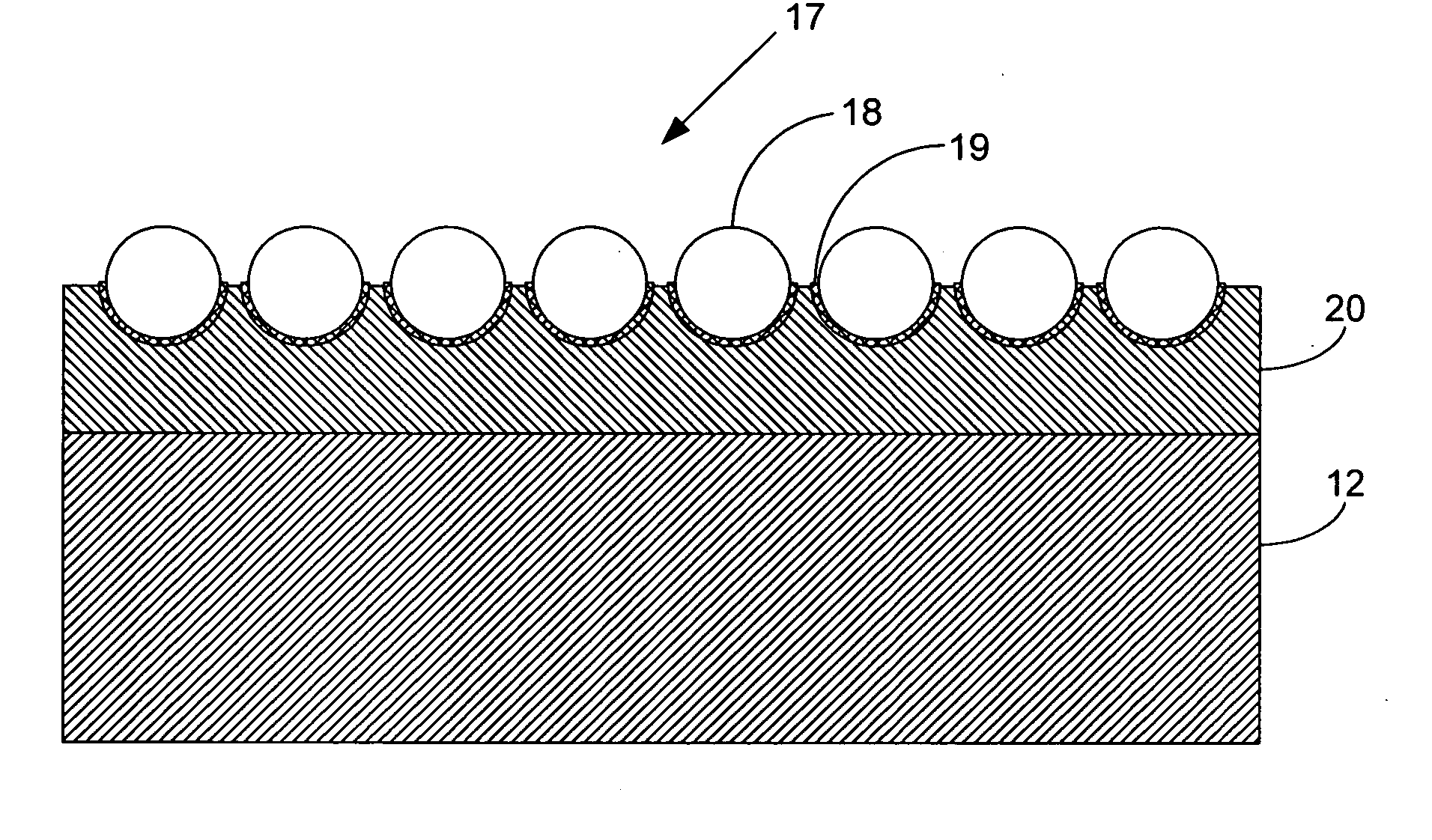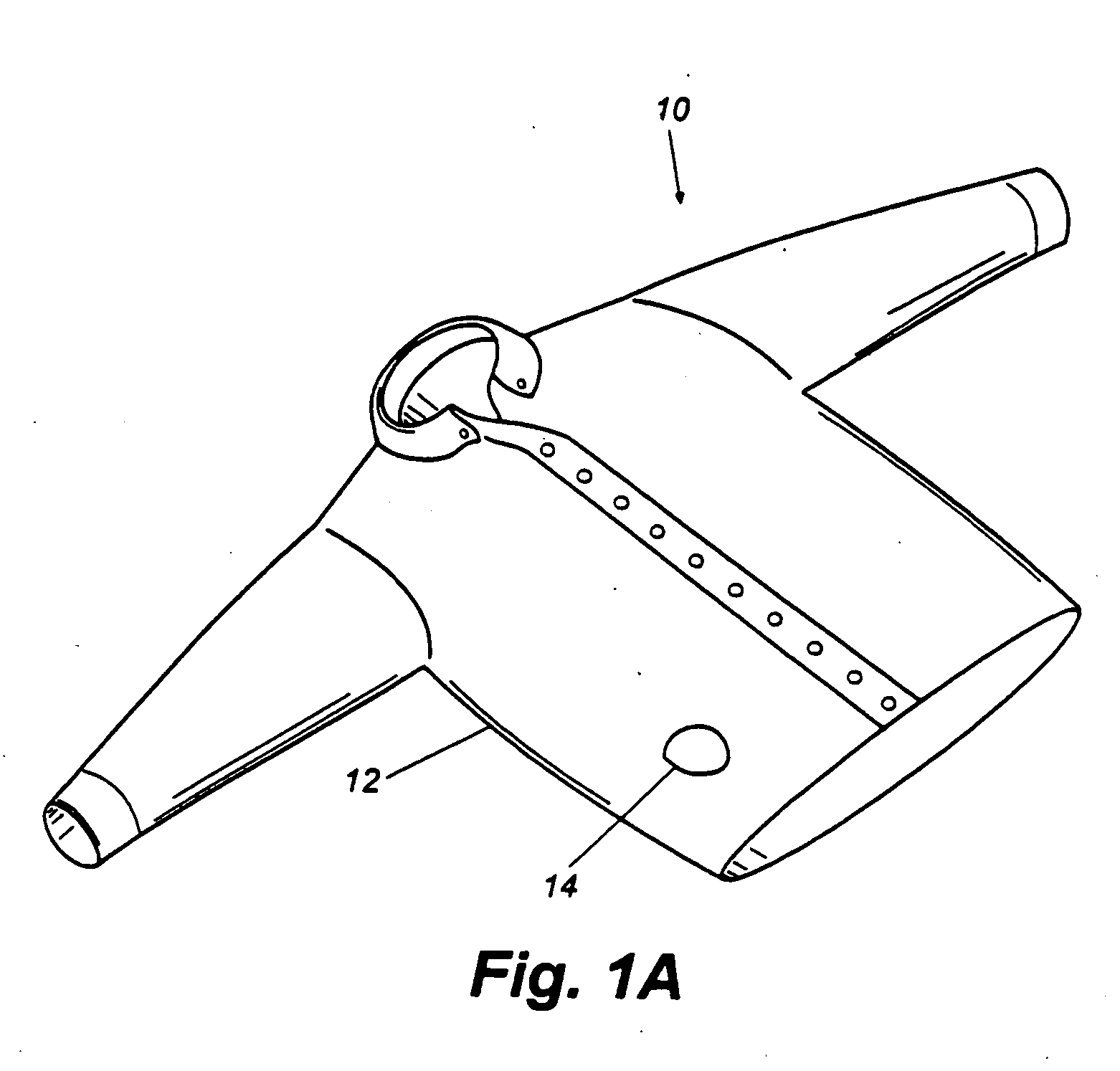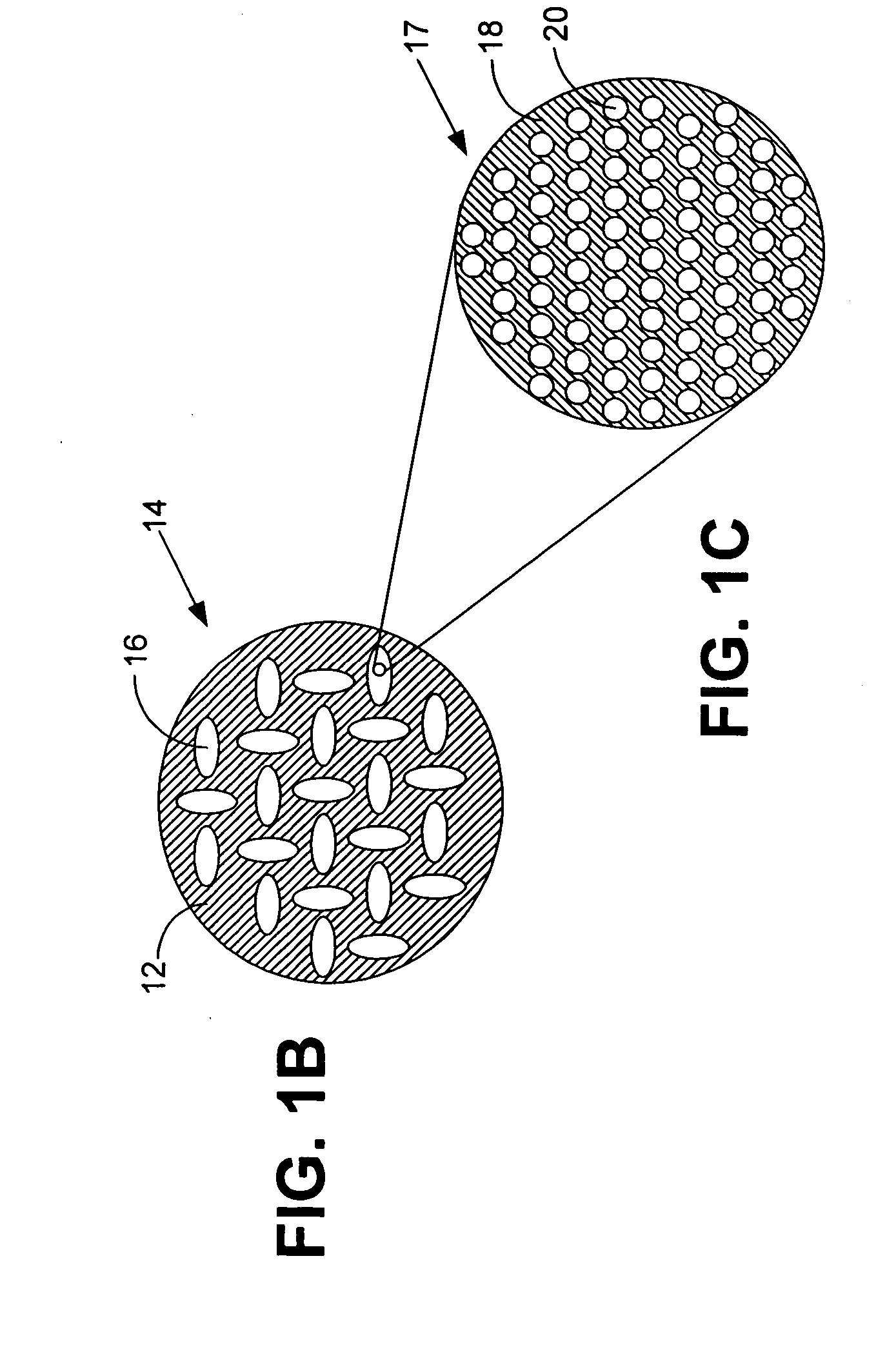Reflective printing on flame resistant fabrics
a technology of reflective printing and flame-resistant fabrics, applied in the field of retro-reflective garments, can solve the problems of ineffective reflective stripes, garments heavier, less flexible,
- Summary
- Abstract
- Description
- Claims
- Application Information
AI Technical Summary
Benefits of technology
Problems solved by technology
Method used
Image
Examples
Embodiment Construction
[0017] Embodiments of the present invention include garments constructed of flame resistant fabrics that have had a plurality of retroreflective elements applied thereon, and therefore, have retroreflective characteristics. To overcome at least some of the deficiencies discussed above, a sufficient quantity of retroreflective elements are applied to the flame resistant fabric such that the entire garment, or at least a substantial portion thereof, is capable of retroreflecting incident light. Therefore, an observer near the incident light source will see an illuminated silhouette of a person wearing the garment, thereby enabling a driver of a vehicle to easily identify the silhouette as a person, rather than as an object. In contrast, if the wearer was wearing garments outfitted only with retroreflective stripes, then the driver may not identify the illuminated stripe as a person and drive with less care than if they saw an illuminated human silhouette. Thus, garments made with flam...
PUM
| Property | Measurement | Unit |
|---|---|---|
| Fraction | aaaaa | aaaaa |
| Fraction | aaaaa | aaaaa |
| Fraction | aaaaa | aaaaa |
Abstract
Description
Claims
Application Information
 Login to View More
Login to View More - R&D
- Intellectual Property
- Life Sciences
- Materials
- Tech Scout
- Unparalleled Data Quality
- Higher Quality Content
- 60% Fewer Hallucinations
Browse by: Latest US Patents, China's latest patents, Technical Efficacy Thesaurus, Application Domain, Technology Topic, Popular Technical Reports.
© 2025 PatSnap. All rights reserved.Legal|Privacy policy|Modern Slavery Act Transparency Statement|Sitemap|About US| Contact US: help@patsnap.com



